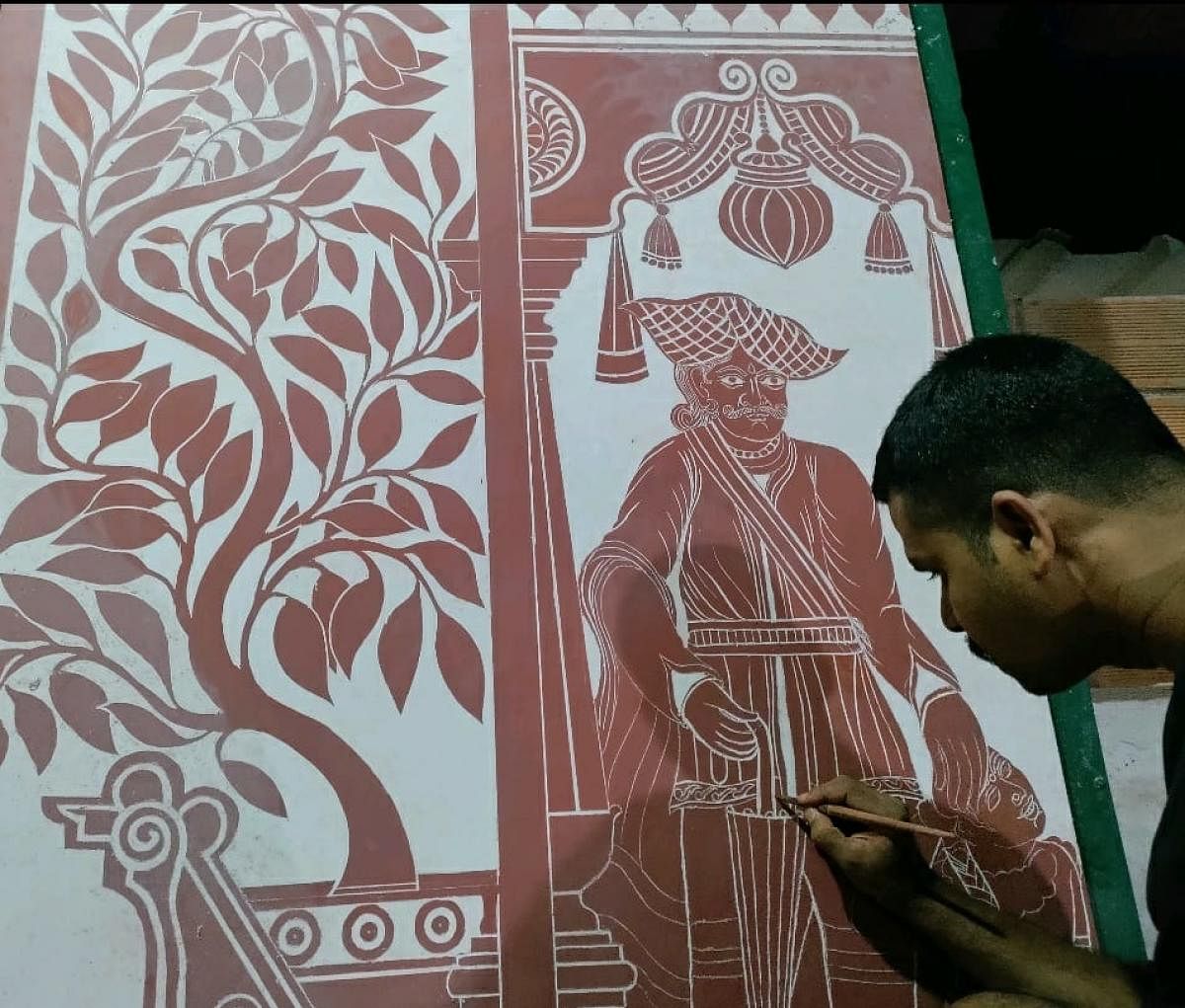Kaavi art: From temples, churches to airports


Carvings of ancient folk tales in bright red oxide greet passengers who arrive at the international terminal of the Mangaluru airport. Several walls and part of the ceiling feature kaavi art, a rare mural form, which has its roots in the Konkan region. The artwork was installed at the airport in August.
Seven artists worked for over 100 days to prepare the blocks of kaavi art now displayed. The pieces were created in separate blocks and then assembled. This installation was part of an initiative to turn the airport into an aesthetically-pleasing space, while also encouraging local artists.
“The idea of turning airports into art spaces has evolved over the years,” said artist Janardana Havanje. He is the founder of ‘Kaavi Bhitti’, a kaavi art research centre, which works towards the preservation of the art form.
Art meets tradition
The word kaavi refers to the peculiar colour of the red oxide, which was once commonly used for flooring. The intricate task of creating kaavi art consists of applying two layers of plaster made out of lime, jaggery and sand. The mixture for the plaster is obtained by fermenting the materials. The second layer comprises a fine paste of red laterite stone. Patterns are then carved out of the top layer to reveal the white layer below.
Kaavi art can be found in the most ancient of temples in Karnataka’s Uttara Kannada district, as well as in Maharashtra and Goa. The oldest-known pieces of kaavi art are on the walls of the Koteshwara and Ganapatheshwara temples in Telangana’s Warangal, dating back to the 12th century, during the Kakatiya rule.
The walls of the 400-year-old St Augustine Church, as well as those of the Se Cathedral, the Our Lady of the Mount Chapel and the Weeping Cross Chapel in Old Goa, too, feature the artform. This shows that it existed even before the Portuguese invasion of Goa. The kaavi artwork in churches mostly depicts floral patterns.
In temples built during the 17th century, kaavi art includes depictions of mythological characters and Hindu deities. Temples built before this period feature imagery and tales from folklore, such as dancing men and women. There are also the typical kaavi motifs of flowers and vines.
However, most of the original artwork in temples built between the 12th and 18th centuries was destroyed during renovations. It is also speculated that foreign invasions like that of the Portuguese in Goa contributed to this destruction.
The major piece displayed at the airport is titled ‘The Colonial Journey’. It features a storied boat, sailing on the sea. The boat is embellished with rich kaavi designs and floral patterns.
The sea on which the boat sails in the piece also features the aquatic world. The marine creatures are featured in the kaavi art with realistic details. For example, one could differentiate between the 15 different fish species, including mackerel and sardines, among others.
The carving also depicts people of various age groups and different social backgrounds.
“Kaavi art was not meant to reflect any particular religious ideology and was more of a folkloristic art. It was inspired by wood-carving patterns, and showcased the culture and heritage of people, apart from flora and fauna,” says Havanje.
Deccan Herald is on WhatsApp Channels| Join now for Breaking News & Editor's Picks